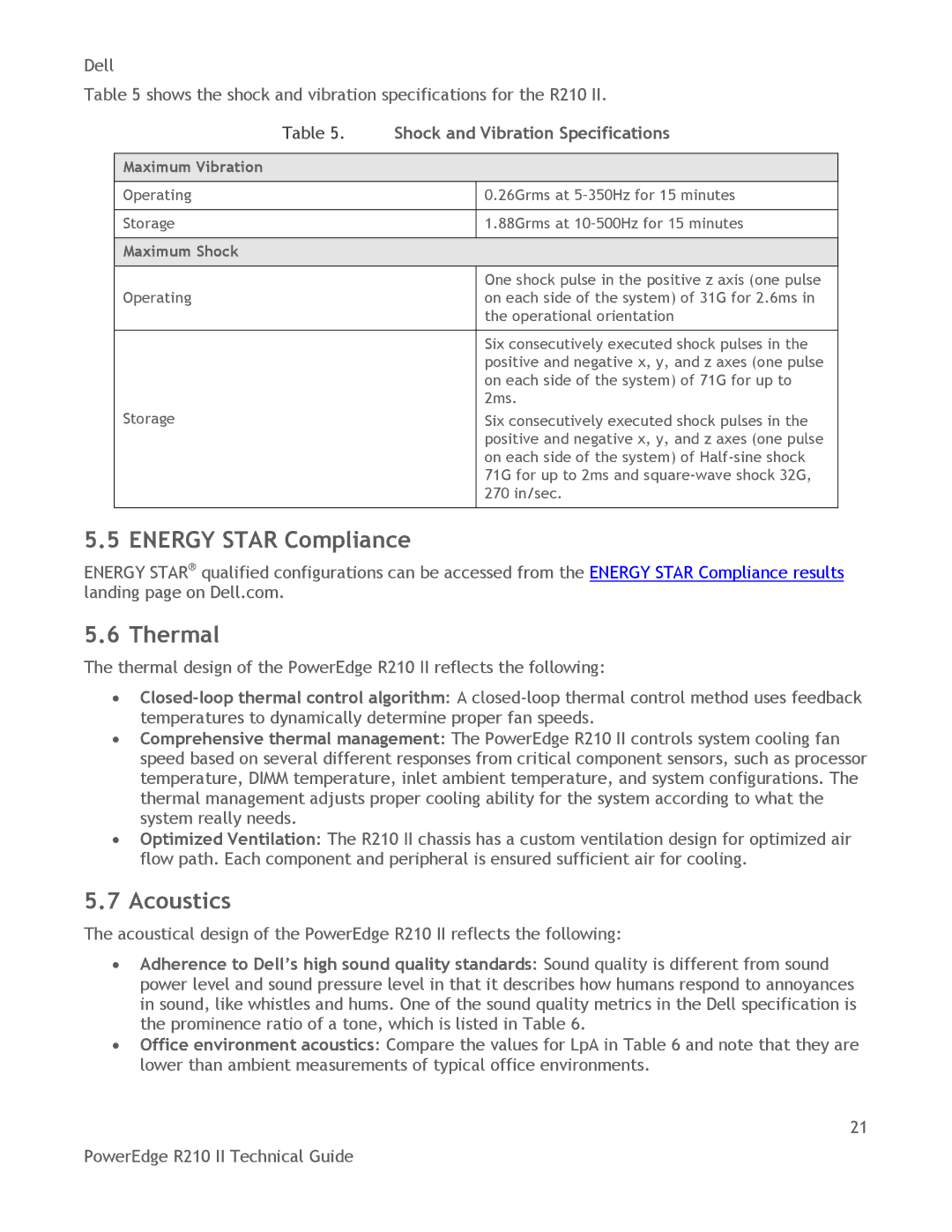Dell
Table 5 shows the shock and vibration specifications for the R210 II.
Table 5. | Shock and Vibration Specifications | |
|
|
|
Maximum Vibration |
|
|
|
|
|
Operating |
| 0.26Grms at |
|
|
|
Storage |
| 1.88Grms at |
|
|
|
Maximum Shock |
|
|
|
|
|
|
| One shock pulse in the positive z axis (one pulse |
Operating |
| on each side of the system) of 31G for 2.6ms in |
|
| the operational orientation |
|
|
|
|
| Six consecutively executed shock pulses in the |
|
| positive and negative x, y, and z axes (one pulse |
|
| on each side of the system) of 71G for up to |
|
| 2ms. |
Storage |
| Six consecutively executed shock pulses in the |
|
| positive and negative x, y, and z axes (one pulse |
|
| on each side of the system) of |
|
| 71G for up to 2ms and |
|
| 270 in/sec. |
|
|
|
5.5 ENERGY STAR Compliance
ENERGY STAR® qualified configurations can be accessed from the ENERGY STAR Compliance results landing page on Dell.com.
5.6 Thermal
The thermal design of the PowerEdge R210 II reflects the following:
∙
∙Comprehensive thermal management: The PowerEdge R210 II controls system cooling fan speed based on several different responses from critical component sensors, such as processor temperature, DIMM temperature, inlet ambient temperature, and system configurations. The thermal management adjusts proper cooling ability for the system according to what the system really needs.
∙Optimized Ventilation: The R210 II chassis has a custom ventilation design for optimized air flow path. Each component and peripheral is ensured sufficient air for cooling.
5.7Acoustics
The acoustical design of the PowerEdge R210 II reflects the following:
∙Adherence to Dell’s high sound quality standards: Sound quality is different from sound power level and sound pressure level in that it describes how humans respond to annoyances in sound, like whistles and hums. One of the sound quality metrics in the Dell specification is the prominence ratio of a tone, which is listed in Table 6.
∙Office environment acoustics: Compare the values for LpA in Table 6 and note that they are lower than ambient measurements of typical office environments.
21
PowerEdge R210 II Technical Guide
